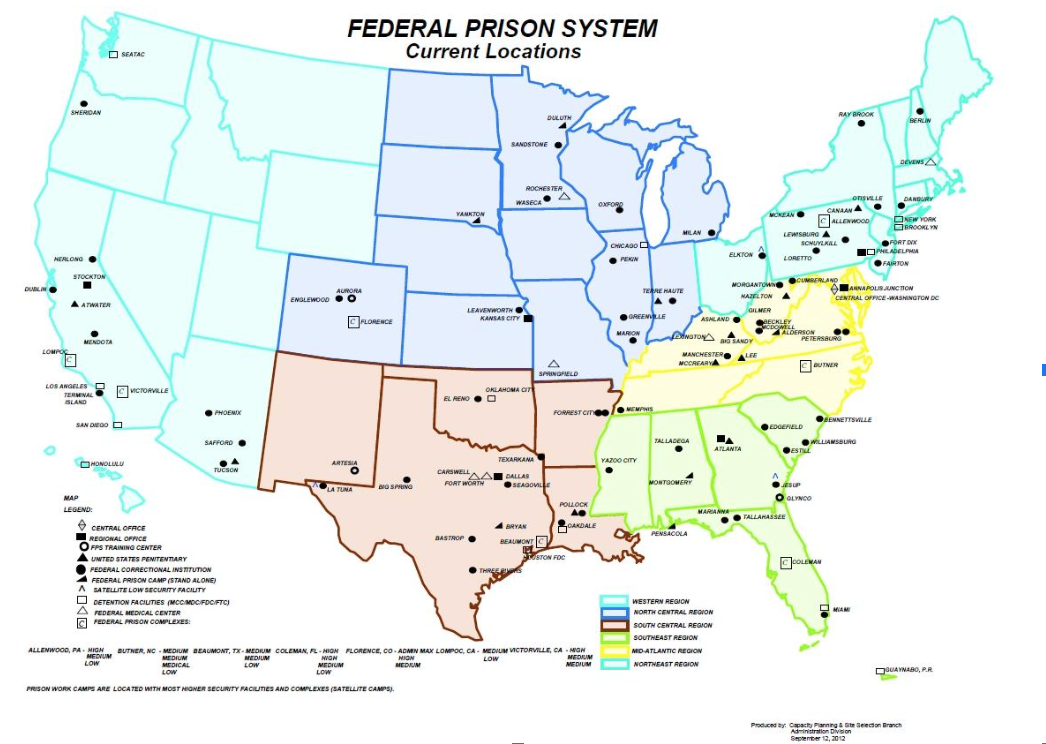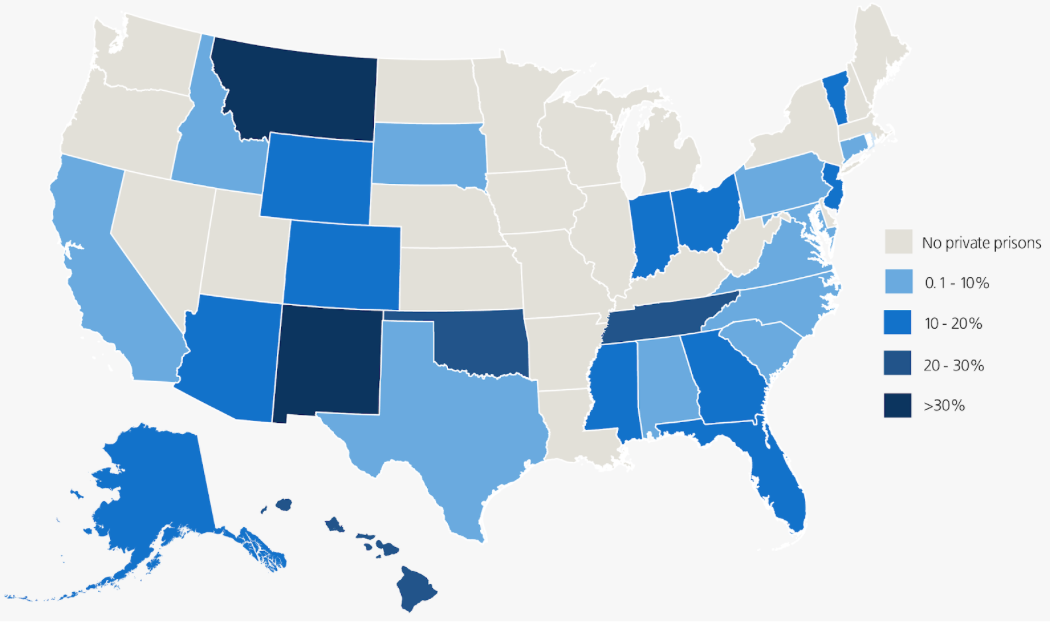8.11. Types of Prisons
David Carter
Prisons in the United States can be parcelled out by jurisdiction and by intensity. By jurisdiction, this refers to who manages the prisons. A prison warden is generally considered the managerial face of the institution. However, a prison warden and the prison itself are usually within a much larger organizational structure. Although not always, these are usually separated by State. There are a few jurisdictions not at the State level that manage or operate prisons. This includes places like New York, Chicago, Philadelphia, and Washington D.C. Puerto Rico (not a State) also has a prison, as does the U.S. territory of the Virgin Islands.
State Prisons
The normal label for the organizational structure of prisons in a particular State is often called Departments of Corrections and are run by a Director, who is usually appointed by a Governor. For example, in Oregon, it is the Oregon Department of Corrections, and Director Peters is the current head of this organization (2012-present). The Oregon Department of Corrections currently oversees 14 State prisons. More information about the ODOC can be found here: https://www.oregon.gov/doc/Pages/default.aspx. California has the California Department of Corrections, and Secretary Diaz is the head of this organization (2018 to present). CDCR oversees 34 adult institutions. For more information about CDCR, see https://www.cdcr.ca.gov/.
Federal Prisons
The Federal Bureau of Prisons was established in the early 1930s as a result of the need to house an increasing number of individuals convicted of federal crimes. There were already some federal prisons in place, but it was not until 1930 that the U.S. Congress passed legislation to create the BOP, housing it under the Justice Department. Sanford Bates became the first Director of the Federal Bureau of Prisons (FBOP or BOP), based on his long-standing work as an organizer and leader at Elmira Reformatory in New York. As more federal legislation was passed, the need for more prisons became apparent.
Today, the BOP has 109 prisons, along with numerous additional facilities (camps) adjoining these locations. There are also military prisons, alternative facilities, reentry centers, and training centers, that are managed by the BOP. The federal prisons are separated into six regions., which include: the Mid-Atlantic Region, the North Central Region, the Northeast Region, the Southeast Region, the South Central Region, and the Western Region.
Within these regions are regional directors, which is similar to state-level directors of departments of corrections. Below is a detailed map of the regions of the Federal Bureau of Prisons. As is depicted, there are several different types of facilities within each region. A central office is also designated for each of the six regions. Click on the link in the annotation of the map to see it on a larger scale.
FBOP Regional Map

Private Prisons
The privatization of goods and services has long been a staple of state departments of corrections, as it allows these organizations to subcontract specific tasks within their prisons. This includes services like food and transportation services, medical, dental, and mental health services, education services, and even laundry services. As mentioned in the previous section on punishment, there was much ado about crime in the United States in the 1970s and 1980s. This brought on an increased fear of crime and a more punitive state within the United States. It was during this time that a small company known as Wackenhut, a subsidiary of The Wackenhut Corporation (TWC) sought to privatize the entirety of a prison, not just services within the prison. A second company, Corrections Corporation of America ultimately won the contract and became the first privately owned prison in the United States (1984). Today, Core Civic (formerly Corrections Corporation of America) runs approximately 128 facilities in the United States. [1] The GEO Group, the other primary private prison company runs 136 correctional, detention, or reentry facilities. [2] Pictured below, roughly half of the 50 States in America use private prison industry prisons.
States Using Private Prison Industry

Much debate has come from the incorporation of private prisons. The critics of private prisons denote the lack of transparency in the reporting processes that would come from a normal prison. Still, others tackle a bigger issue – punishment for profit. That is – while taxpayers ultimately pay for all punishment of individuals, either at the State or Federal level, shareholders and administrators of the companies are making money by punishing people, under the guise of capitalism. For a more in-depth review of this, see a report presented by the Sentencing Project: https://www.sentencingproject.org/publications/private-prisons-united-states/ and on NPR: https://www.npr.org/2010/10/28/130833741/prison-economics-help-drive-ariz-immigration-law

